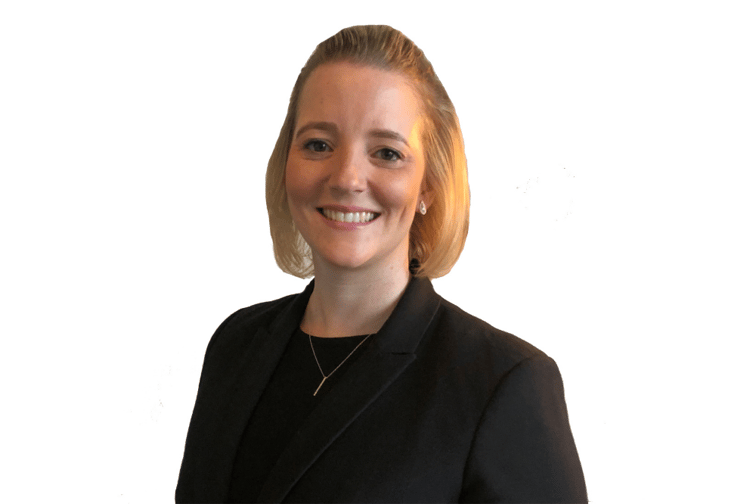

In early 2020 as the COVID-19 pandemic spread, Australia’s insurance companies had good reason to worry about their business interruption insurance (BI) policies. A UK court ruling in favour of policyholders only heightened their concerns.
“In the UK the policies did respond so essentially the industry in Australia was gearing up for a business interruption style catastrophe,” said Sydney based Emma Levett (pictured above), partner and head of Forensic Advisory Services (FAS) at Sedgwick.
Sedgwick, the global risk consultancy company, advises insurance companies about how to handle difficult claims and losses, including BI cases. The firm claims to have the largest forensic accounting insurance team in Australia and was expecting the bulk of BI claims to come in its direction.
Read more: Judgement announced in COVID-19 BI test case
“Business interruption is what we do, and most insurers don’t have their own business interruption team,” said Levett’s Sedgwick colleague, Rodney Milford (picture below), who is also an AFS partner and based in Sydney.
Sedgwick, said Milford, counts most large Australian insurance companies among its clients. Rather than assessing tricky BI claims in-house, these insurers send them out to forensic accountants for assessment.
“So, when it comes to technical questions they come to us and they come to the lawyers,” said Milford.

“There were concerns that there might have been tens of thousands of claims, possibly over 100,000 claims from the early days, just based on the number of business interruption policies out there,” said Tom O’Hara (pictured below), FAS manager at Sedgwick and based in Brisbane.
O’Hara described the COVID-19 pandemic as a “once in a career” event.
“In the initial stages we were thinking that every business in Australia was potentially impacted in some way,” he said.

The possibility of significant volumes of BI claims, said Levett, also raised the prospect of a shortage of forensic accountants to assess them.
Insurance law experts say rulings in Australia’s Federal Court on two test cases - the most recent judgement in February - favoured insurance companies. However, appeals are being sought on parts of the rulings in the High Court. That prospect of large volumes of claims has diminished but not yet disappeared.
“So really our interest in this test case comes from making sure that we’re across the outcome and working with our clients to make sure that when these claims do start coming through that we can assess them appropriately, in line with the policy and in line with what the court is determining,” said Levett.
Milford said, in some ways, the second test case decision was “a flip” compared to the first test case.
“The first test case on the issue of the Quarantine Act versus the Biosecurity Act went against insurers,” he said. “So, insurers initially thought they weren’t insuring a pandemic but because of that drafting issue around the Quarantine Act that first test case decision meant there was potentially large volumes of claims across most insurers,” he added.
Milford explained that the second test case ruling said insurers do have to pay claims under the Quarantine Act. However, he said, on the other issues it was predominantly in the insurers’ favour.
“So it was a big turnaround from the first test case,” he said.
One issue at stake in the appeals now with the High Court, said Milford, is whether it’s possible to make pandemic claims under certain extensions in the BI policies.
Two of the appeals now with the High Court, said Levett, deal with whether coverage will be available under either the prevention of access clause or the catastrophe or hybrid clause.
IAG has also filed an appeal, she said, to see whether JobKeeper payments need to be taken into account.
“If the appeals are upheld by the High Court, then it would potentially bring about a large increase in claims volumes. So they’re quite significant issues that are being considered again,” said O’Hara.
Levett said that during the pandemic, when insurers realized there was exposure under these wordings with the Quarantine Act reference, the policy wordings were tightened up.
“So a lot of these wordings changed during the course of the pandemic when insureds came to renew. So you got a new policy wording with updated exclusions,” she said.
Levett said her team is talking to insurers about how the court decisions impact any calculation of losses.
“We’re working with them around interpretation of their policies and overlaying on that the interpretation of the court and then saying, on that basis, this is how you need to calculate these losses and working with them on the quantification side,” she explained.
Levett said even when courts finish with the matter there will still be considerable interpretation left for insurers to make.
“So there’s still a lot of policy interpretations and decisions about how every policy will respond,” she said.
The FAS head said part of the complexity comes from the different ways the pandemic impacted businesses. Some suburban businesses, she said, benefitted greatly from the lockdowns but many CBD businesses were left dormant and struggling.
“So just because one insurer has one policy and interpretation, it’s the complexities around how it responds to every business differently as well,” she said.
Milford said the issue of BI insurance policies and whether they can cover pandemics still has some way to run.
“This has been going around and around for two years and is likely to go around for another year or more,” he said.
Milford said from the perspective of its longevity, this BI case is the most consuming he’s dealt with during his three-decade career.
